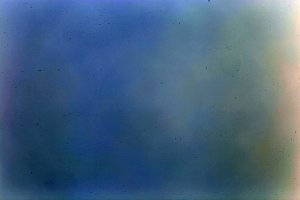In October 2016, I sent my 6D to a (what I thought was a respected) company for full-spectrum modification. A day or two after arrival, I took some test shots and went shooting some landscapes for a few hours. Since I have been very busy finishing my PhD thesis, I only quickly looked at them and didn't do much processing and I hardly used the camera in the last months. I did notice quite some dust and assumed it accumulated after modification so I decided to have it cleaned by a specialized camera cleaning company over 200 km away from me, together with all my other cameras. Since I don't want to make such a long drive, I decided to jsut wait until I could combine it with something nearby (and save fuel).
Yesterday, he cleaned it and told me that there is a lot of dust trapped under the "cleaning filter". Apparantly, there is still some filter on top of my sensor and dust got truapped underneath during the modification.
The company who modified it said: I am not sure if we can do anything since you waited for 3 months. WTF! I showed them a CR2 file with all the dust, which was taken days after I got my camera back after modification. All dust particles on that photo perfectly allign with the test picture taken by the cleaning comany after cleaning. This company has cleaned over 50,000 cameras and manages to get every camera completely clean. He also modified a 600D for IR in the past, but I sold it because I wanted fullframe IR.
I showed them a CR2 file with all the dust, which was taken days after I got my camera back after modification. All dust particles on that photo perfectly allign with the test picture taken by the cleaning comany after cleaning. This company has cleaned over 50,000 cameras and manages to get every camera completely clean. He also modified a 600D for IR in the past, but I sold it because I wanted fullframe IR.
The conversion company offered me to send the camera back and 'he could see what he could try to get it cleaner'. The cleaning company says that they have seen modified cameras from all companies that do conversions and that almost none of them do it in a clean enough environment to prevent dust trapping, so sending it back won't help, they said.
On top of that, the automatic sensor cleaning no longer works, which is normal according to the conversion comapny. Unfortunately, this also means that when you attempt to collect dust delete data you get error 06 - unable to clean sensor. This mens there is no way to automatically apply dust delete data for the trapped sensor dust? Is there some way to 'cheat' and create a dust delete data profile, since the trapped dust would be absolutely 100% fixed and never move?
Comments, suggestions, advice, opionions much welcome since I feel quite disappointed about how I have been treated by the conversion company.
Yesterday, he cleaned it and told me that there is a lot of dust trapped under the "cleaning filter". Apparantly, there is still some filter on top of my sensor and dust got truapped underneath during the modification.
The company who modified it said: I am not sure if we can do anything since you waited for 3 months. WTF!
The conversion company offered me to send the camera back and 'he could see what he could try to get it cleaner'. The cleaning company says that they have seen modified cameras from all companies that do conversions and that almost none of them do it in a clean enough environment to prevent dust trapping, so sending it back won't help, they said.
On top of that, the automatic sensor cleaning no longer works, which is normal according to the conversion comapny. Unfortunately, this also means that when you attempt to collect dust delete data you get error 06 - unable to clean sensor. This mens there is no way to automatically apply dust delete data for the trapped sensor dust? Is there some way to 'cheat' and create a dust delete data profile, since the trapped dust would be absolutely 100% fixed and never move?
Comments, suggestions, advice, opionions much welcome since I feel quite disappointed about how I have been treated by the conversion company.

